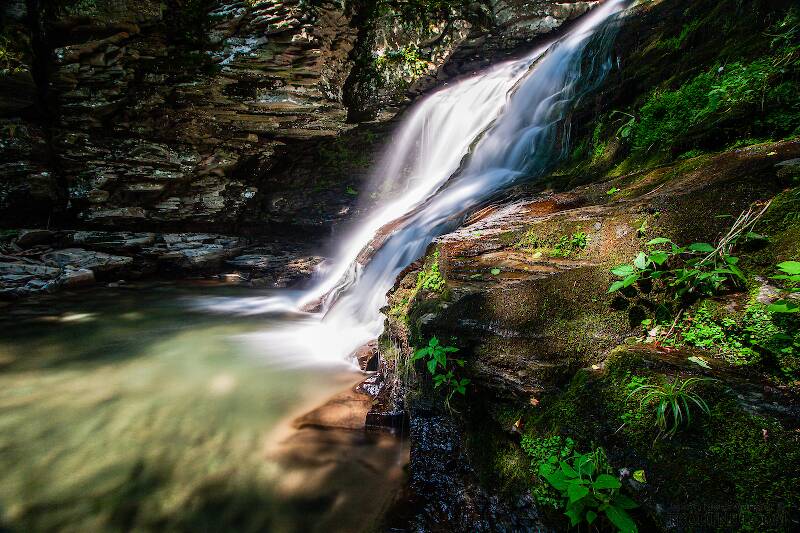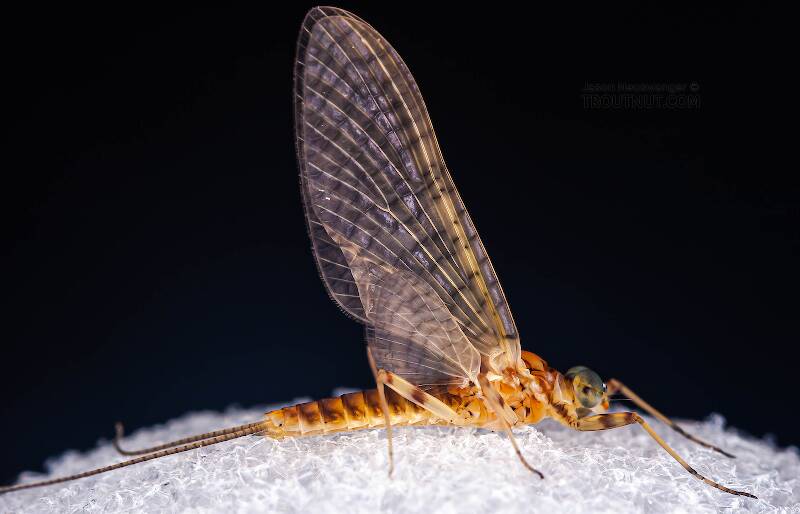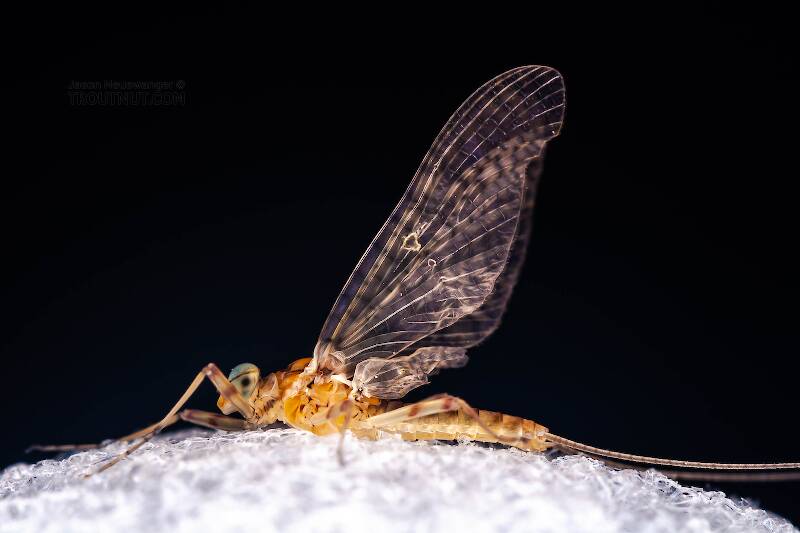
Blue-winged Olives
Baetis
Tiny Baetis mayflies are perhaps the most commonly encountered and imitated by anglers on all American trout streams due to their great abundance, widespread distribution, and trout-friendly emergence habits.

Mayfly Species Stenonema ithaca (Light Cahills)
Where & when
In 11 records from GBIF, adults of this species have been collected during June (64%), May (18%), and July (18%).
Species Range
Hatching behavior
This species emerges much more gracefully than Maccaffertium vicarium, so emerger patterns are not as important.The duns are better to match, since they may drift for quite a while time to dry their wings and make a commotion getting off the water. Caucci and Nastasi report in Hatches II that their stomach samples verify this preference for the duns.
Spinner behavior
Time of day: Late afternoon to dusk, depending on weather
Habitat: Riffles
Nymph biology
Current speed: Riffles and runs
Substrate: Gravel
Physical description
Most physical descriptions on Troutnut are direct or slightly edited quotes from the original scientific sources describing or updating the species, although there may be errors in copying them to this website. Such descriptions aren't always definitive, because species often turn out to be more variable than the original describers observed. In some cases, only a single specimen was described! However, they are useful starting points.
Male Spinner
Wing length: 11-12 mm
A reddish brown species; penes distinctly L-shaped; no spiracular dots; tails pale, joinings darker.
Head red-brown; purplish band across middle area of carin; black rings at bases of antennae. Thorax deep red-brown; pleura somewhat paler than notum and sternum. Median area and posterior margin of pronotum blackish. A purplish black streak laterally on prothorax extending down across fore coxa; similar dark streak on pleura anterior to wing roots. Dark purplish or reddish brown markings on pleura below root of each wing. Coxae deep red-brown, apical and lateral margins and a small apical spot reddish black. Posterior portion of mesosternum darker than remainder of sternum. Fore femur light reddish brown, with median and apical dark purplish red bands; tibia yellowish red, blackish at apex; tarsus yellowish with smoky tinge, joinings narrowly darker. Basal joint of fore tarsus somewhat less than 1/2 the length of the second. Middle and hind legs yellowish, sometimes with faint reddish tinge; femoral bands as on fore leg; tips of tibiae and tarsal joinings reddish brown. Wings hyaline; longitudinal veins yellowish to reddish brown, cross veins dark red-brown; veins of costal margin slightly thickened, cross veins not dark-margined. Only a very slight crowding of cross veins at bulla; usually 1 in costal space, 2 or 3 in each of two following spaces. Costo-apical region somewhat opaque, may be faintly brown-tinged; a faint reddish or brownish stain occasionally present in stigmatic area, typically without such a stain. Veins of hind wing paler and finer.
Abdominal tergites 1-8 largely occupied by wide reddish to purplish brown bands on the posterior margin, from which deep shading of same color extends forward almost to the anterior margins. A mid-dorsal streak of same dark color extends the length of the abdomen, sometimes divided by a very narrow pale median line. Near each spiracle is a pale irregularly oval space surrounded by purplish grey markings. No dark spiracular dots. A pale yellowish area remains on each side of each tergite on anterior margin; pleural fold usually narrowly pale. Sternites greyish, more or less tinged with pale reddish or purplish; posterior margins narrowly purplish grey, so that abdomen appears somewhat annulate. Traces of brownish triangles in posterolateral areas may be present. Segments 9 and 10, often the posterior portion of 8, opaque, bright reddish with distinct yellow tinge; tergites with usual dark markings. Penes distinctly L-shaped; of rubromaculatum (now a synonym of Stenonema modestum) type. Tails pale greyish or yellowish white; joinings narrowly deep purplish brown, alternate joinings wider.
This species is darker red-brown than S. fuscum (now a synonym of Stenonema vicarium) or rivulicolum (now a synonym of Stenonema vicarium), which it somewhat resembles; abdominal sternites dark-tinged and with darker posterior margins; the penes are also more sharply L-shaped.
Specimens of the Mayfly Species Stenonema ithaca
2 Male Duns
1 Female Dun
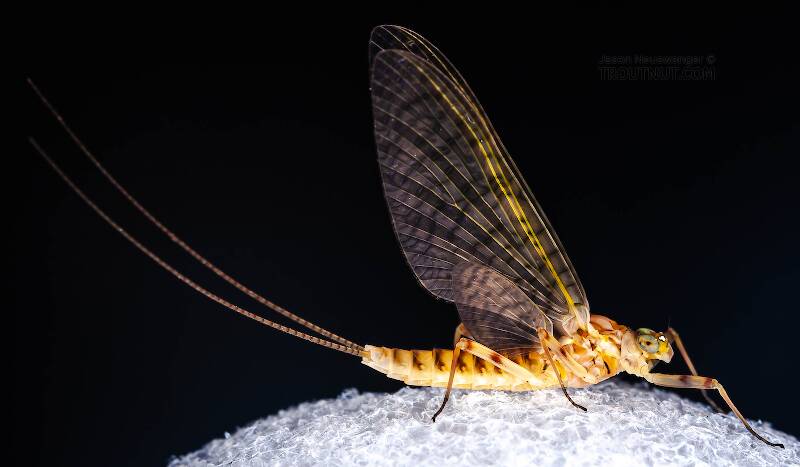
1 Nymph
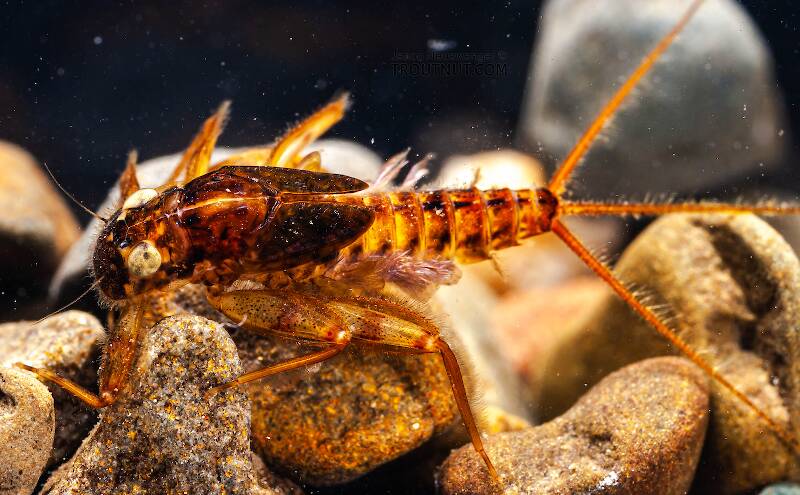
Start a Discussion of Stenonema ithaca
References
- Caucci, Al and Nastasi, Bob. 2004. Hatches II. The Lyons Press.
- Knopp, Malcolm and Robert Cormier. 1997. Mayflies: An Angler's Study of Trout Water Ephemeroptera . The Lyons Press.
- Leonard, Justin W. and Fannie A. Leonard. 1962. Mayflies of Michigan Trout Streams. Cranbrook Institute of Science.
- Needham, James G., Jay R. Traver, and Yin-Chi Hsu. 1935. The Biology of Mayflies. Comstock Publishing Company, Inc.
- Schwiebert, Ernest G. 1955. Matching the Hatch. MacMillan Publishing Company.
Mayfly Species Stenonema ithaca (Light Cahills)
Species Range
Common Names
Resources
- NatureServe
- Integrated Taxonomic Information System
- Global Biodiversity Information Facility
- Described by Clemens and Leonard (1924)

